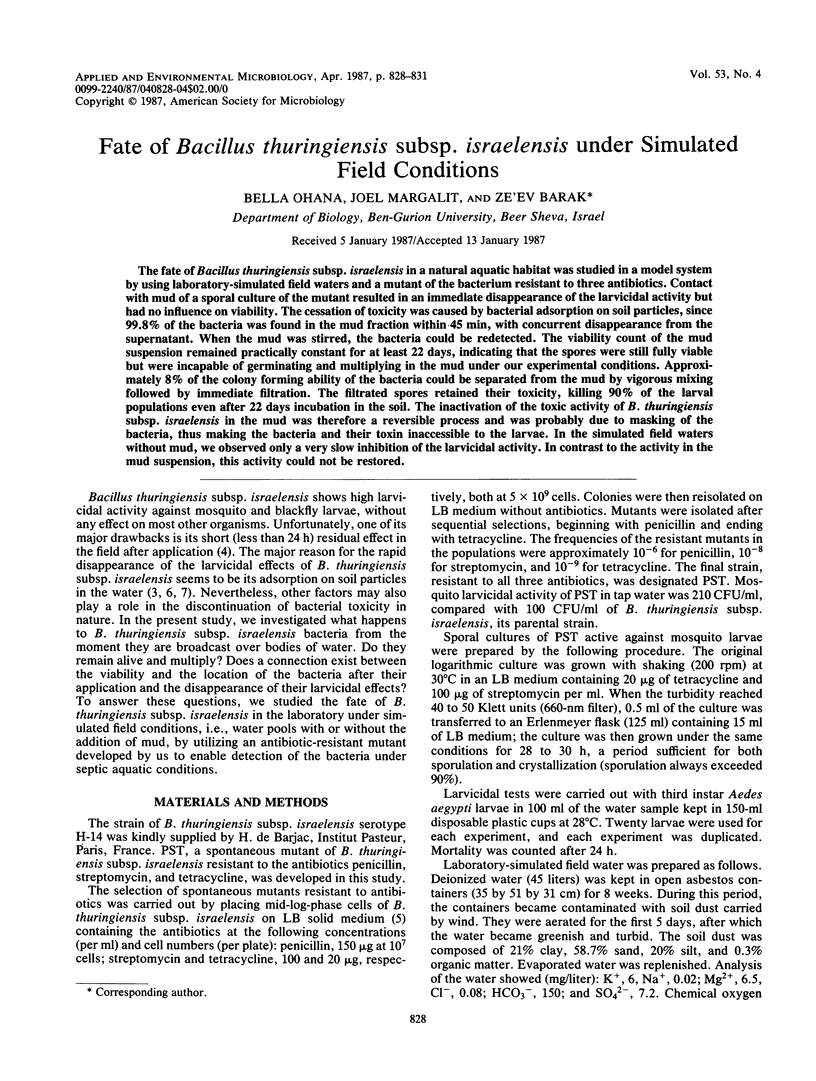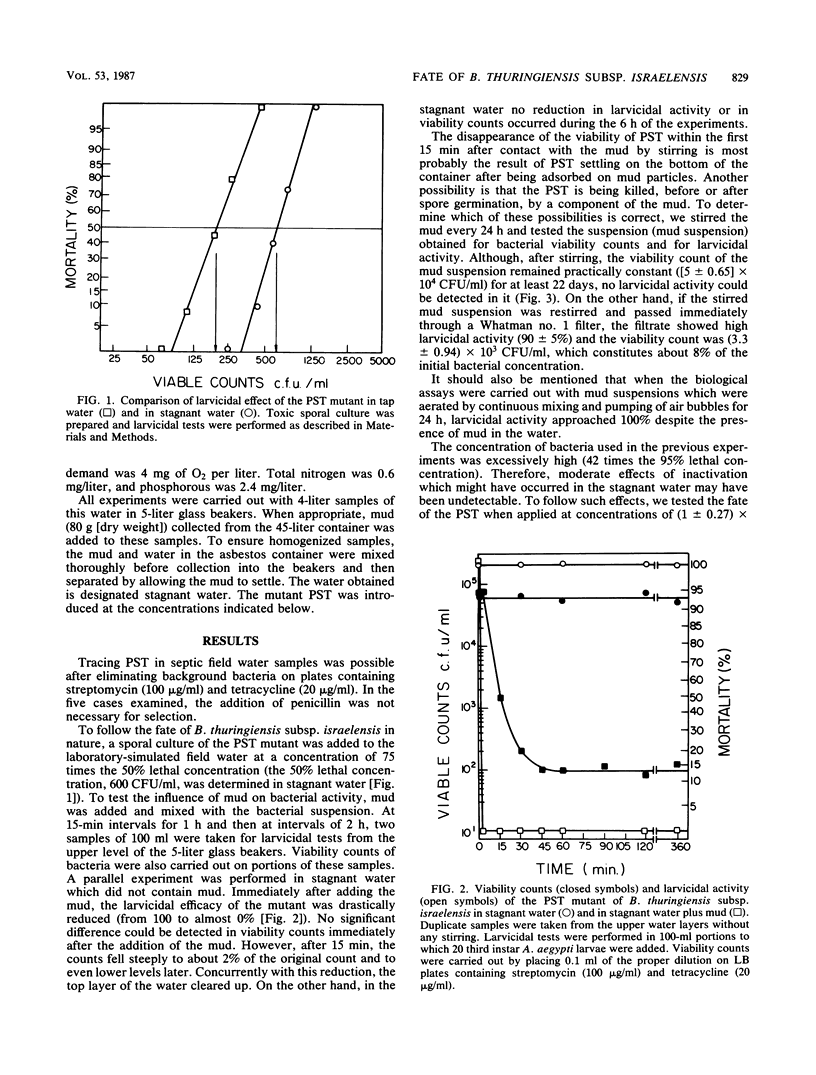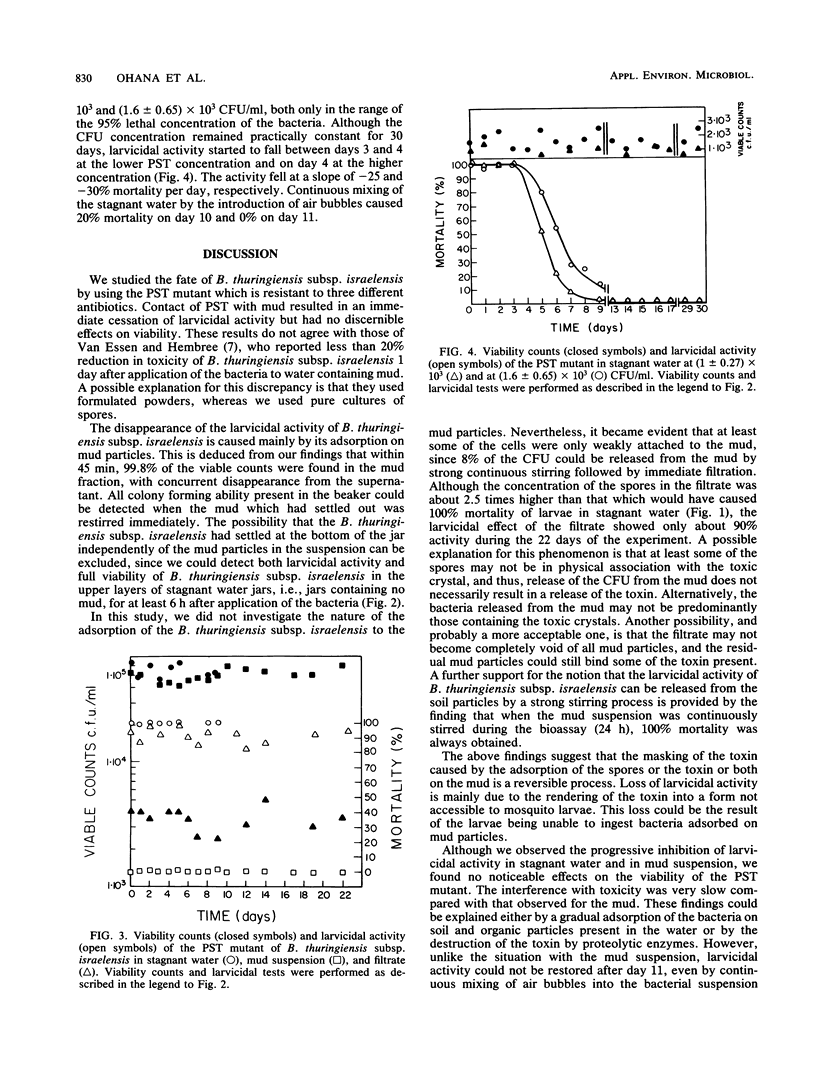Abstract
The fate of Bacillus thuringiensis subsp. israelensis in a natural aquatic habitat was studied in a model system by using laboratory-simulated field waters and a mutant of the bacterium resistant to three antibiotics. Contact with mud of a sporal culture of the mutant resulted in an immediate disappearance of the larvicidal activity but had no influence on viability. The cessation of toxicity was caused by bacterial adsorption on soil particles, since 99.8% of the bacteria was found in the mud fraction within 45 min, with concurrent disappearance from the supernatant. When the mud was stirred, the bacteria could be redetected. The viability count of the mud suspension remained practically constant for at least 22 days, indicating that the spores were still fully viable but were incapable of germinating and multiplying in the mud under our experimental conditions. Approximately 8% of the colony forming ability of the bacteria could be separated from the mud by vigorous mixing followed by immediate filtration. The filtrated spores retained their toxicity, killing 90% of the larval populations even after 22 days incubation in the soil. The inactivation of the toxic activity of B. thuringiensis subsp. israelensis in the mud was therefore a reversible process and was probably due to masking of the bacteria, thus making the bacteria and their toxin inaccessible to the larvae. In the simulated field waters without mud, we observed only a very slow inhibition of the larvicidal activity. In contrast to the activity in the mud suspension, this activity could not be restored.
Full text
PDF



Selected References
These references are in PubMed. This may not be the complete list of references from this article.
- Zaritsky A., Khawaled K. Toxicity in carcasses of Bacillus thuringiensis var. israelensis-killed Aedes aegypti larvae against scavenging larvae: implications to bioassay. J Am Mosq Control Assoc. 1986 Dec;2(4):555–559. [PubMed] [Google Scholar]


